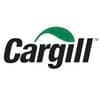Afecciones podales e impacto productivo en rodeos lecheros del Noroeste Argentino
El objetivo fue estimar la prevalencia de afecciones podales (AP) en vacas en ordeñe de 16 tambos de Salta y sus relaciones con su grado de suciedad (GS) y pérdidas productivas. Mediante el software de 3 tambos se registró en vacas de ≥3 pariciones con AP (n= 73) la producción previa y posterior a la lesión. Se comparó su intervalo partoparto (IPP), el número de servicios (NS) y su destino final con vacas sanas (n=28). La prevalencia anual de AP fue de 21,3 ±13,8%, hallándose una asociación positiva (r2= 0,23; p<0,005) determinada por el GS. El total de vacas con AP descartadas o muertas (72,9%) fue superior (p<0,0016) que en las sanas (25%) (OR= 8,08). Las vacas con AP necesitaron mayor (p<0,04) NSS (3,39 vs. 2,11) (OR =3,13) y el 8,3% presentaron (p<0,051) un IPP < 400 días comparadas con las sanas (35,0%) (OR=5,92). La producción previa a la AP fue superior (26,3 l vs. 20,3 l; p<0,016). El presente trabajo refleja el perjuicio que ocasionan las AP sobre los índices productivos, la salud y el bienestar de las vacas.
Palabras clave: Bovinos, tambo, afecciones podales, producción, índices reproductivos


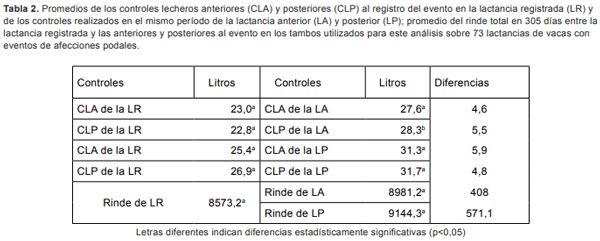
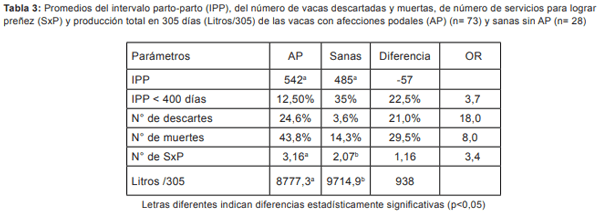
1. Suárez VH, Martínez GM. Características y Problemáticas Productivas – Sanitarias de la Lechería del Valle de Lerma (Salta). INTA Ediciones, Col. Investigación, desarrollo e innovación. 2015. 66 p. ISBN 978-987-521-670-9.
2. Espejo LA, Endres MI. Herd-level risk factors for lameness in high-producing Holstein cows housed in freestall barns. J Dairy Sci 2007; 90:306-314.
3. Amory JR, Barker ZE, Wright JL, Mason SA, Blowey RW, Green LE. Associations between sole ulcer, white line disease and digital dermatitis and the milk yield of 1824 dairy cows on 30 dairy cow farms in England and Wales from February 2003-November 2004. Prev Vet Med 2008; 83:381-391.
4. Martínez GM, Suárez VH, Ghezzi, MD. Bienestar animal en bovinos de leche: selección de indicadores vinculados a la salud y producción. RIA Rev. investig. agropecu. 2016; 42(2):153 – 160.
5. Suárez, VH, Martínez, GM., Bertoni, EA. Relación en vacas lecheras entre la prevalencia de mastitis y el grado de suciedad y productividad. Rev Arg Prod Anim 2017; 37(1):18.
6. Von Keyserlingk MAG, Rushen J, De Pasille AM, Weary DM. The welfare of dairy cattle - Key Concepts and the role of science. J Dairy Sci 2009; 92:4101-4111.
7. Galindo F, Broom D, Jackson P. A note on possible link between behaviour and the occurrence of lameness in dairy cows. Appl Anim Behav Sci 2000; 67:335–341.
8. Warnick LD, Janssen D, Guard C L, Grohn YT. The effect of lameness on milk production in dairy cows. J Dairy Sci 2001; 84:1988–1997.
9. O`Callaghan K. Lameness and associated pain in cattle – challenging traditional perceptions. In practice 2000; 24:212- 219.
10. Juarez S, Robinson P, DePeters E, Price E. Impact of lameness on behavior and productivity of lactating Holstein cows. Appl Anim Behav Sci 2003; 83(1):1-14.
11. Hernandez JA, Garbarino EJ, Shearer JK, Risco CA, Thatcher WW. Comparison of milk yield in dairy cows with different degrees of lameness. J Am Vet Med Assoc 2005; 227:1292– 1296.
12. Gomez F, Boer H, van Eedenburg F. Relationship between mild lameness and expression of oestrus in dairy cattle. Vet Rec 2003; 152:403-404.
13. Vermunt J. The multifactorial nature of cattle lameness: a few more pieces of the jigsaw. Vet J 2005; 169:317-318.
14. Hughes J. A system for assessing cow cleanliness. In Practice 2001; 23:517-524.
15. Cardozo LL, Thaler Neto A, Souza GN, Picinin LCA, Felipus NC, Reche NML, y col. Risk factors for the occurrence of new and chronic cases of subclinical mastitis in dairy herds in southern Brazil. J Dairy Sci 2015; 98:7675-7685
16. Welfare Quality. 2009. Lelystad, the Netherlands. En: http:// www.welfarequality.net/ consultado el 15/9/2018.
17. Sprecher D, Hostetler D, Kaneene J. A lameness scoring system that uses posture and gait to predict dairy cattle reproductive performance. Theriogenology 1997; 47:1179-1187.
18. Martínez GM, Suárez VH. Protocolo de evaluación de bienestar animal en tambos bovinos del Noroeste Argentino. Ediciones INTA 2017, 66p. ISSBN: 978-987-521-840-6.
19. Nielsen BH, Angelucci A, Scalvenzi A, Forkman B, Fusi F, Tuyttens FAM, y col. Use of animal based measures for the assessment of dairy cow welfare (ANIBAM). External Scientific Report EN-659. EFSA Supporting Publications, Parma, Italy 2014; 11(9):340.
20. Taverna M, Walter E. Ficha Técnica Nº1: Afirmado de callejones de tambo. Infraestructura e Instalaciones de Tambo. Proyecto Lechero 2008. Ediciones INTA.
21. Martínez GM, Suarez VH, Ghezzi MD. Effects of muddy conditions on dairy cattle welfare. 54ª Reunión Anual de Sociedade Brasileira de Zootecnia, Foz de Iguazú, Brasil, 24- 28 julio 2017.
22. Manske T. Hoof Lesions and Lameness in Swedish Dairy Cattle. Prevalence, risk factors, effects of claw trimming, and consequences for productivity. 2002. Doctoral thesis. Swedish University of Agricultural Sciences, Skara, Sweden. ISBN 91- 576-6390-4.
23. Green LE, Hedges VJ, Schukken YH, Blowey RW, Packington AJ. The Impact of Clinical Lameness on the Milk Yield of Dairy Cows. J Dairy Sci 2002; 85:2250–2256.
24. Claves. Convenio de Asistencia Técnica Institucional INTA – Elanco – AACREA. 2009; 1-25.
25. McConnel CS, Lombard JE, Wagner BA, Garry FB. Evaluation of factors associated with increased dairy cow mortality in United States dairy operations. J. Dairy Sci 2008; 91:1423- 1432.
26. Varlyakov I, Penev T, Mitev J, Miteva T, Uzunova K, Gergovska ZH. Effect of lameness on the behavior of dairy cows under intensive production systems. Bulg J of Agric Sci 2012; 18(1):125-132.
27. Bicalho RC, Machado VS, Caixeta LS. Lameness in dairy cattle: A debilitating disease or a disease of debilitated cattle? A cross-sectional study of the prevalence of lameness and the thickness of the digital cushion. J Dairy Sci 2009; 92:3175- 3184.
28. Green LE, Borkert J, Monti G, Tadich N. Associations between lesion-specific lameness and the milk yield of 1,635 dairy cows from seven herds in the Xth region of Chile and implications for management of lame dairy cows worldwide. Anim Welfare 2010; 19:419-427.
29. Tadich N, Hettich E, van Schaik G. Prevalencia de cojeras en vacas de 50 rebaños lecheros del sur de Chile. Arch Med Vet 2005; 37:29-36.
30. Webster A. Farm animal welfare: the five freedoms and the free market. Vet J 2001; 161:229-237.
31. Oltenacu PA, Broom DM. The impact of genetic selection for increased milk yield on the welfare of dairy cows. Anim Welfare 2010; 19(S):39-49.
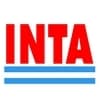

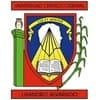
Estos problemas son de sì muy importantes, tanto que son incluidos en los indices de mejoramiento genetico, por desgarcia, al elegir los toros los ganaderos solo pensan en la hpt de producciòn, y no atienden
los hpt de patas y pesuñas, asì como los hpt de cuenta de celulas somaticas, hay que recordar que el fenotipo es producto de la suma de genotipo+ ambiente + interacciòn genotico ambiental, aparte de la correcciòn ambiental, creo que les seria de utilidad, el ver los indices que cubren otras cosas, por ello hoy los grandes hatos americanos, asì como los pequeños escandinavos cruzan toros de razas con diferentes enfasis, en rasgos como fertilidad, patas y pesuñas, cuenta de celulas somaticas, vida util, y rentabilidad. este es un excelente trabajo para detectar problemas., las soluciones se encuentran combinando genotipos, de manera mas efctiva, aparte del mero tratamiento medico.











